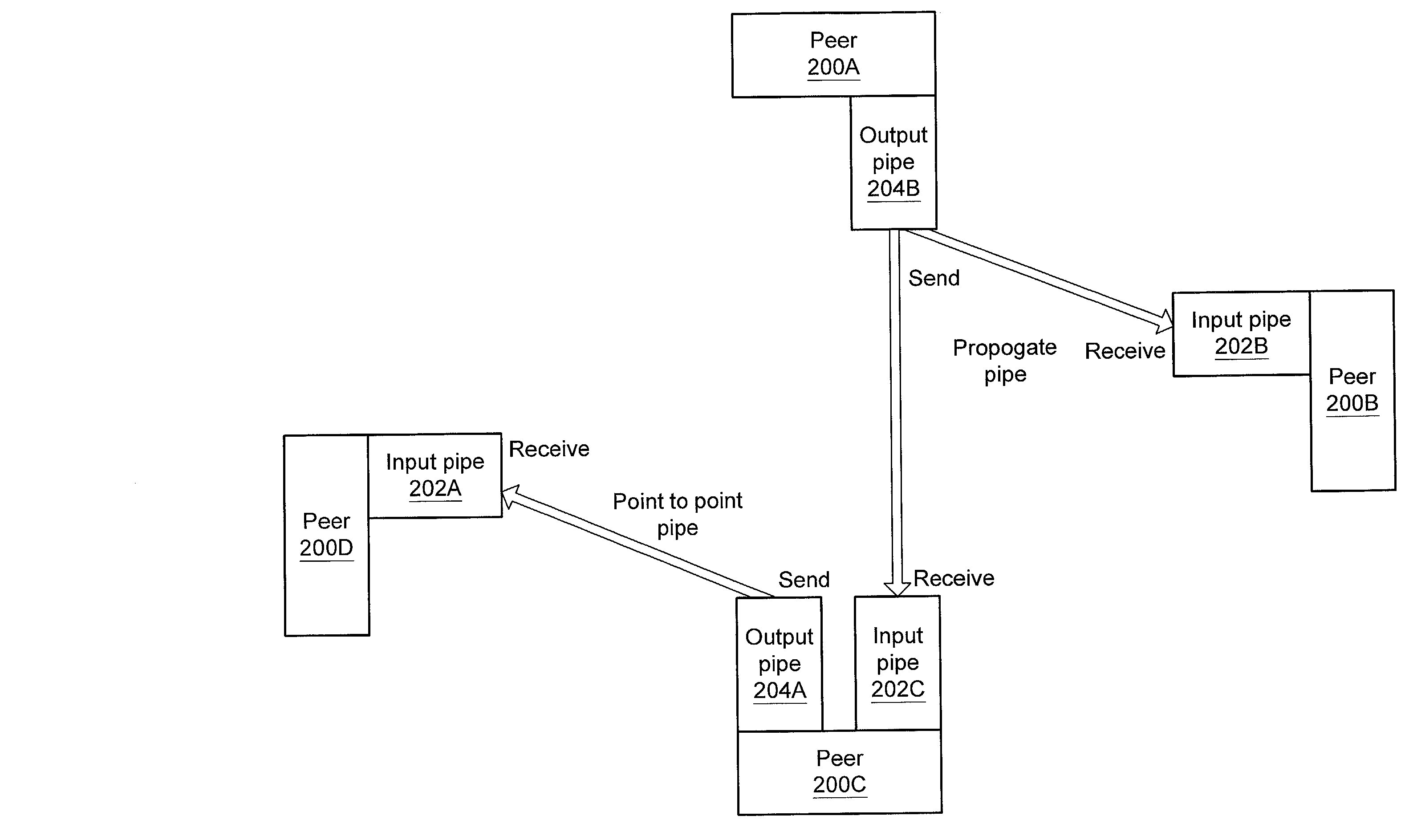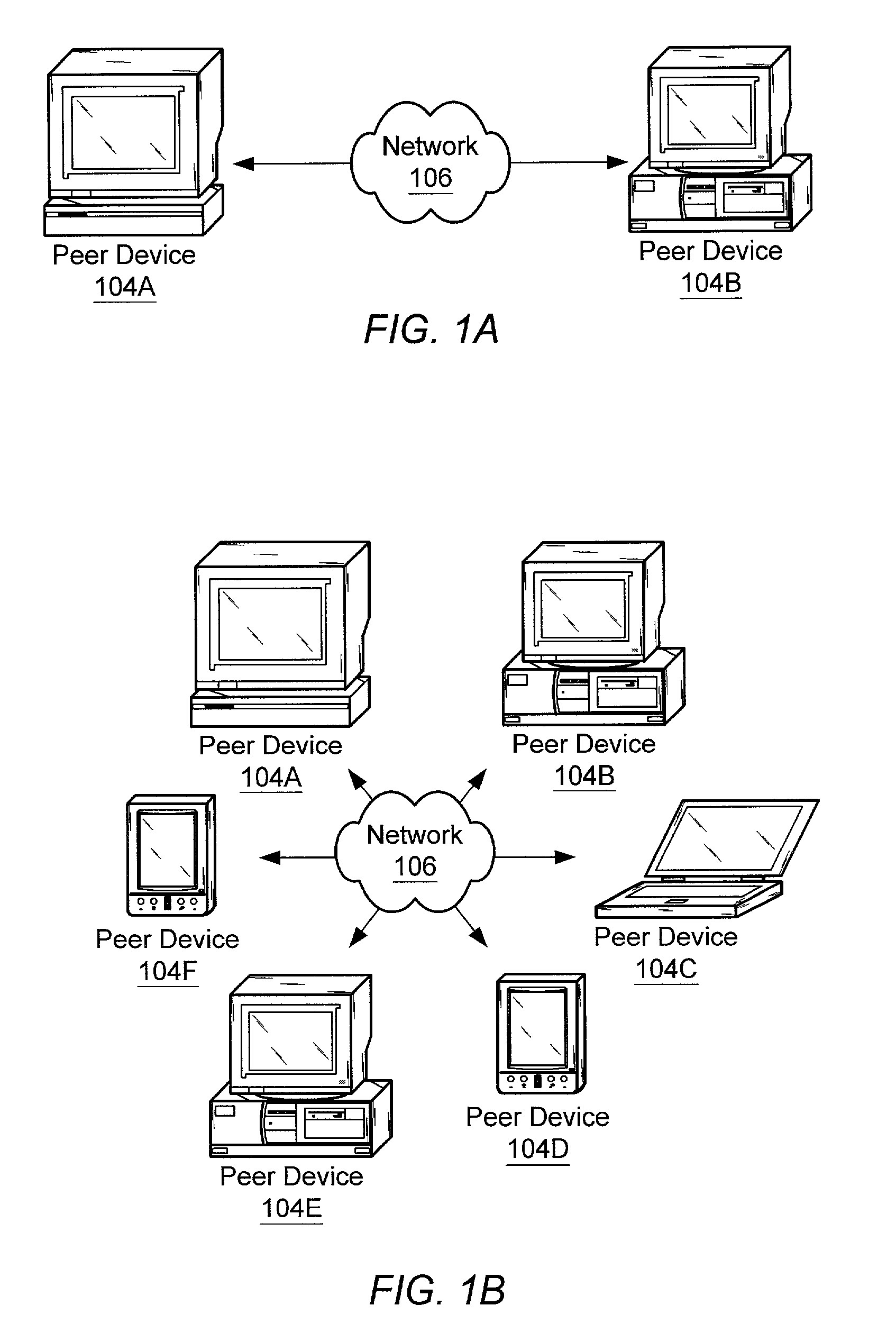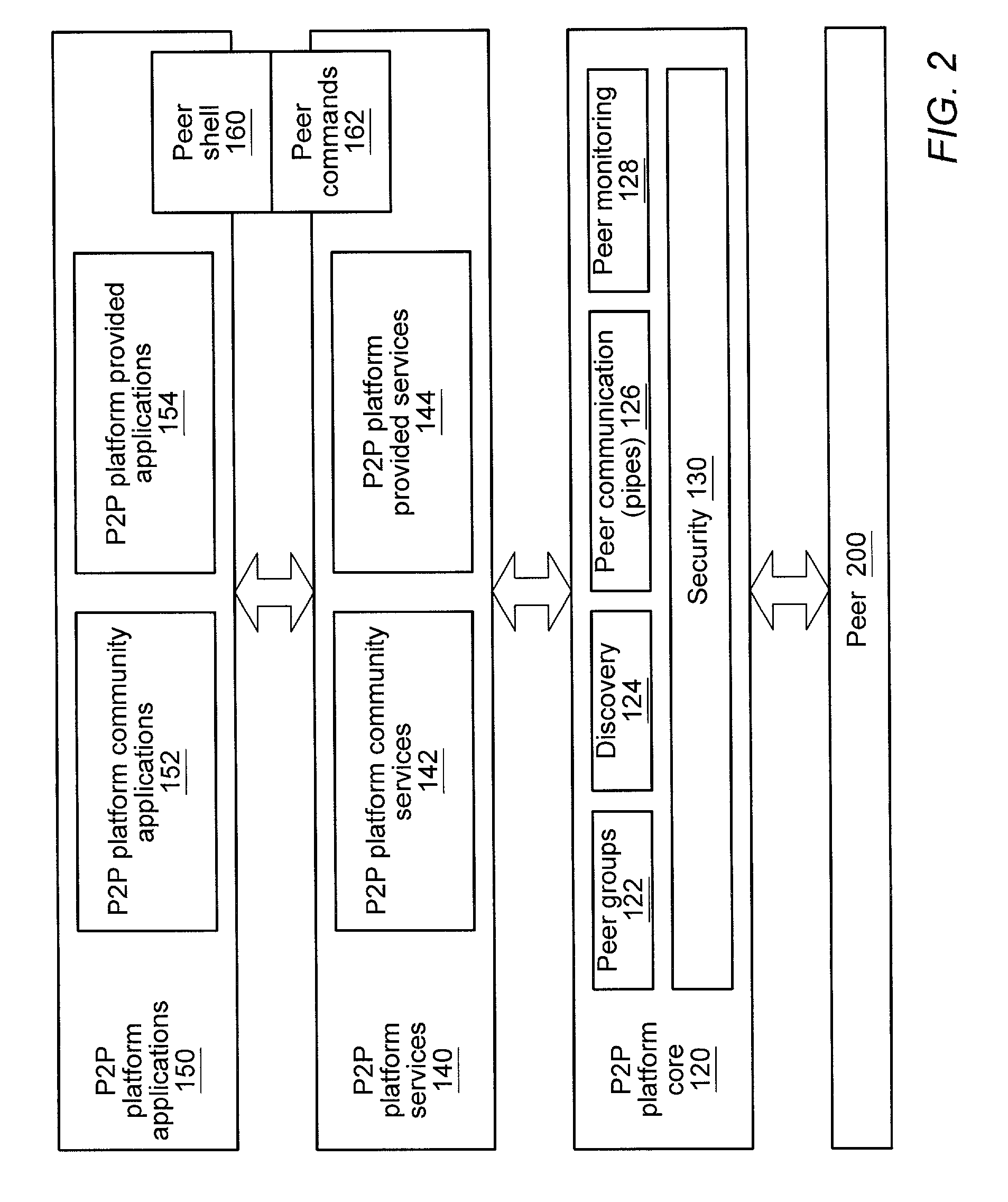Advertisements for peer-to-peer computing resources
a technology of peer-to-peer computing and advertising, which is applied in the field of peer-to-peer network computing platforms, can solve the problems of increasing difficulty in finding useful information in real time, no single search engine or portal can locate and catalog the ever-increasing amount of information, and the effect of reducing the number of users
- Summary
- Abstract
- Description
- Claims
- Application Information
AI Technical Summary
Problems solved by technology
Method used
Image
Examples
Embodiment Construction
[0076] Embodiments of an open network computing platform designed for peer-to-peer computing are described. The network computing platform may be referred to as a peer-to-peer platform. The peer-to-peer platform may be used to build a wide range of distributed services and applications in which every device is addressable as a peer, and where peers can bridge from one domain into another. The peer-to-peer platform may enable developers to focus on their own application development while easily creating distributed computing software that is flexible, interoperable, and available on any peer on the expanded Web. The peer-to-peer platform may enable software developers to deploy interoperable services and content, further spring-boarding the peer-to-peer revolution on the Internet. The peer-to-peer platform addresses the problems of prior art peer-to-peer systems by providing a generic and service-agnostic peer-to-peer platform that may be preferably defined by a small number of proto...
PUM
 Login to View More
Login to View More Abstract
Description
Claims
Application Information
 Login to View More
Login to View More - R&D
- Intellectual Property
- Life Sciences
- Materials
- Tech Scout
- Unparalleled Data Quality
- Higher Quality Content
- 60% Fewer Hallucinations
Browse by: Latest US Patents, China's latest patents, Technical Efficacy Thesaurus, Application Domain, Technology Topic, Popular Technical Reports.
© 2025 PatSnap. All rights reserved.Legal|Privacy policy|Modern Slavery Act Transparency Statement|Sitemap|About US| Contact US: help@patsnap.com



